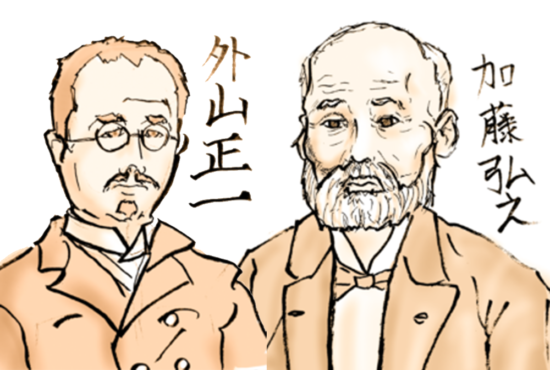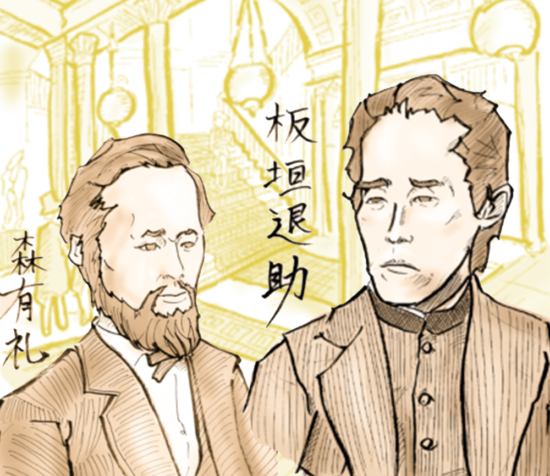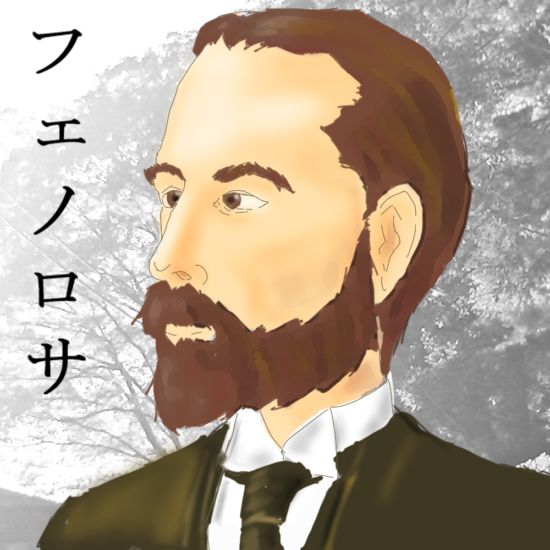今回は、イトーヨーカ堂と出会う前のアメリカ・ダラス発祥のサウスランド社のセブンイレブンについて、ダラスの歴史と共に紹介します。
【1・ダラスの発展とセブンイレブンのサウスランド社の誕生】
ダラスは、メキシコからテキサス共和国として独立し、1846年マシュー・ペリーも参戦した(この戦いによって総司令官となり日本へ来る)米墨戦争を経て、アメリカの中の市となりました。その後、綿花の生産地となっていきます。
1870年代半ばにはヒューストンからダラス方向の南西の鉄道と、東から西のカルフォルニア州の方場で続く西東のパシフィック鉄道の交差点となったため、交通の要所となり綿花や原材料などの輸出拠点として(特にカルフォルニア方面に行く際の原材料の調達の最終点として)発展していきました。
1880年代には中西(ダラスの北)方面との鉄道も開通し、メインストリートは電気が張り巡らされ、人口がさらに急激に増加していき発展していきました。因みにこの頃、南方熊楠はダラスの北のデトロイトに赴いた際、電気が明るい都市の有様に驚いています。
その後も、ダラスは主力として農場の綿花などの輸出を持っていましたが、コストや人口が増えて新しい産業が生まれてきたこともあり、銀行や産業が発展してきます。
1900年代には、商業も発達してきてNeiman Marcusなどの大きな百貨店が出来てきたり、Praetrianビルなど高層ビルも登場してきました。また、1910年にはメキシコ独立革命などが起こり、メキシコの移民も多く移住してきて、ダラスは様々な方角から人口が流入して拡大していました。
そんな急激に拡大している時期に登場してきたのが、アメリカのセブンイレブンを作ることになるサウスランド社でした。
1927年創業の時は、まだ電気冷蔵庫が普及しておらず、氷を売る製氷小売店としての創業でした。氷はさまざまな時間にニーズがあり、よりよいサービスを提供しようと営業時間・営業日数を伸ばすことによって拡大していきました。
そうすることによって、便利なお店という認知からついでに食品などもおいてほしいという要望があり、また製氷小売店は夏にニーズが集中してしまい従業員を1年中雇うためも氷以外の食品を置くメリットもあり、コンビニエンス・ストアの原型ができてきました。
【2.再建と発展】
しかし、1929年の世界恐慌のあおりも受け、一時自己破産することになりました。ただ、①その当時ダラスは石油が発見され石油ブームによって再び活気付き始めていたことと、②この頃までに小売業のディスカウントシステムが発展し(更に恐慌を乗り切るために加速し)大規模な店で低価格が目立つお店作りが主流になりつつあった事、③禁酒法が解禁されビールなどのニーズが増えた事から、ちょっとした買い物が便利にできるお店のニーズが潜在的に生じ始めていてサウスランド社の再建は急速に進みました。
この頃のサウスランド社は商品をお客さんのところ(車まで)持って来てくれるサービス形態だったため、「買って運ぶ」(Tote them)からトーテムの像を店頭に立てていたため、トーテム・ストアと呼ばれていました。
その後も、ダラスは第二次世界大戦中は軍需産業都市として、その後は銀行・石油・貿易、さらに集積回路を始めとする新しい産業の発展により、拡大する一方で、セブンイレブンもファーストフードや便利商品やガソリンスタンドの併設などサービスを多様化していき、上り調子でした。
更に創業者のトンプソンは、ニューヨークなどで大規模な百貨店の小売り事業の展開を推し進めたシアーズ・ローバックのウッド将軍などとも知遇を得ていて、小売店の出店の大切さや従業員教育などのシステムの重要性をしっかりと整えて行ったようです。
【3.二代目と市場拡大】
1960年には二代目に引き継ぎ、ラスベガスなど夜遅くも買い物のニーズがある街での実験などを経て、7~11時まで営業する「セブンイレブン」となりました。
この時には自動車の普及が進んできて、都市と郊外の形成ができてきました。そのため、郊外で過ごすという新しいライフスタイルは、コンビニのニーズと合致して、「セブンイレブン」は多くの場所で展開しても発展できると確信が持ててきました。
それから「セブンイレブン」は西海岸においての展開や海外進出も進めていき発展していたのです。
そんな活気づいたダラスの街に本社を置き、アメリカ全土と海外への進出を意欲的に進めていた時期に、イトーヨーカ堂はアメリカに行き、「セブンイレブン」のコンビニ事業の展開の交渉に出るのです。
ですので、サウスランド社としては、日本への展開は勿論サウスランド社主導で、しかもスーパーマーケットに対抗するコンビニとしての展開という視点で考えていたため、イトーヨーカ堂の立場と異なり交渉に難航するのです。
■以下、参考情報■
ダラスの歴史
1819, the Adams-Onís Treaty between the United States and Spain defined the Red River as the northern boundary of New Spain, officially placing the future location of Dallas well within Spanish territory.※2
1821, when Mexico declared independence from Spain, and the area was considered part of the Mexican state of Coahuila y Tejas. ※2
1836, Texians, with a majority of Anglo-American settlers, gained independence from Mexico and formed the Republic of Texas.※2
1839 John Neely Bryan surveyed the area around present-day Dallas.※2
「テネシー州の政治家、ジョン・ニーリー・ブライアンが入植し、一帯で栽培される綿花の集散地として発展させた。」※1
1841, he returned to establish a permanent settlement named Dallas. ※2
1845The Republic of Texas was annexed by the United States in 1845 and Dallas County was established the following year. ※2
1846米墨戦争が勃発。マシュー・マシューペリーがメキシコ湾のベラクルスへの上陸作戦を指揮。
1856 Dallas was formally incorporated as a city ※2
「1872年には南北を結ぶMKT(ミズーリ・カンザス・テキサス)鉄道、翌年にはカリフォルニアパシフィック鉄道が開通したことにより、内陸の交通要衝として発展した。」※1
1873 The major north-south (Houston and Texas Central Railroad) and east-west (Texas and Pacific Railway) Texas railroad routes intersected in Dallas in 1873, thus ensuring its future as a commercialcenter.…New buildings and new businesses appeared daily. Dallas was the epicenter of the markets for raw materials and commodity crops, such as grains and cotton, which were shipped to the South and East. It was also the “last chance” stop for supplies for people traveling west※3
With the construction of railroads, Dallas became a business and trading center and was booming by the end of the 19th century. It became an industrial city, attracting workers from Texas, the South, and the Midwest. ※2
Industrial period (1874–1929)
The Industrial Period saw Dallas grow from a center of farming and ranching into a major, self-sustaining industrial city. The industrial growth in Dallas formed partially out of problems hurting Dallas area farmers: After buying supplies on credit during the year, farmers owed merchants the majority of their crop. Costs to ship to the coast were very high, and the price of cotton was dropping.※3
1880, the Missouri-Kansas-Texas Railroad, under the leadership of Jay Gould, reached Dallas※3
1885, the Main Street was lit with electricity※3
1890, Dallas annexed the city of East Dallas, which was larger geographically than Dallas. The annexation made Dallas the most populous city in Texas. ※3
1893, following the national financial panic, numerous industries and five Dallas banks failed. Cotton prices dipped below five cents a pound, and the lumber and flour markets had all but vanished, so many people began leaving the city. ※3
1898, the city began to recover and grow again※3
By the turn of the 20th century, Dallas was the leading drug, book, jewelry, and wholesale liquor market in the Southwestern United States. It also quickly became the center of trade in cotton, grain, and even buffalo. It was the world’s leading inland cotton market, and it still led the world in manufacture of saddlery and cotton gin machinery.[6] During the early 20th century, Dallas transformed from an agricultural center to a center of banking, insurance, fashion retailing and other businesses. ※3
Neiman Marcus
1907 The store, established on September 10, 1907, was lavishly furnished and stocked with clothing of a quality not commonly found in Texas. Within a few weeks, the store’s initial inventory, mostly acquired on a buying trip to New York made by Carrie, was completely sold out. Oil-rich Texans, welcoming the opportunity to flaunt their wealth in more sophisticated fashion than was previously possible, flocked to the new store. In spite of the Panic of 1907 set off only a few weeks after its opening, Neiman Marcus was instantly successful, and its first several years of operation were quite profitable.[6]
1909 The Praetorian Building in Dallas of 15 stories, built in 1909, was the first skyscraper west of the Mississippi and the tallest building in Texas for some time. It marked the prominence of Dallas as a city. ※2
The rapid expansion of population increased competition for jobs and housing.※2
The expansion of industrial jobs attracted migrants from across the region, as well as waves of immigrants, first from southern and eastern Europe. The area bordered by Maple Avenue, McKinney Avenue and the MKT (Missouri, Kansas, Texas) Railroad became known as Little Mexico following 1910, …he start of the Mexican Revolution (1910–1920). Mexicans from all walks of life came to the Dallas area to take jobs in factories, agriculture and the railroads.※3
Oil period (1930–1945)
1930 Despite the onset of the Great Depression, business in construction was flourishing in 1930.…spawning the East Texas oil boom. Dallas quickly became the financial center for the oil industry in Texas and Oklahoma. …This put off most thoughts of depression until the middle of 1931, when falling prices and overproduction affected the city economy negatively. By then, more than 18,000 people in the city were unemployed. Before the New Deal policy began, the city had a work-for-food program that helped many※3
1930年~
「20世紀になってテキサス東部で油田が発見され、市況は大いに潤った。また同年代に航空機産業誘致に成功し、とりわけ軍用機産業が発展、中南部最大の都市としてめざましい発展を遂げた」※1
1936 The Texas Centennial Exposition was a world’s fairpresented June 6 – November 29, 1936, at Fair Parkin Dallas, Texas. A celebration of the 100th anniversary of Texas‘s independence from Mexico in 1836, it also celebrated Texas and Western Americanculture. More than 50 buildings were constructed for the exposition, and many remain today as notable examples of Art Deco architecture. Attracting more than six million people including President Franklin D. Roosevelt, the exposition was credited with buffering Dallas from the Great Depression.※4
1942 During World War II, Dallas served as a manufacturing center for the war effort. In 1942, the Ford Motor plant in Dallas converted to war-time production, producing only jeeps and military trucks. In 1943 the city began war rationing, with 376,085 ration books distributed※3
Mid century (1946–1974)
In 1957, developers Trammell Crow and John M. Stemmons opened a Home Furnishings Mart, designed by Donald H. Speck, that grew into the Dallas Market Center, the largest wholesale trade complex in the world※3
In 1958 a version of the integrated circuit was invented in Dallas by Jack Kilby of Texas Instruments; this event punctuated the Dallas area’s development as a center for high-technology manufacturing (though the technology Mr. Kilby developed was soon usurped by a competing technology simultaneously developed in the “Silicon Valley” in California by engineers who would go on to form Intel Corporation). During the 1950s and 1960s, Dallas became the nation’s third-largest technology center, with the growth of such companies as Ling-Temco-Vought (LTV Corporation) and Texas Instruments. ※3
「1963年11月22日、市内で遊説中のジョン・F・ケネディ大統領の暗殺事件が発生すると、その汚名は世界中に知れ渡ることになり、「city of hate」のレッテルを貼られてしまう。これにより市のイメージが悪化し、多くのビジネスチャンスを失うこととなり、市況は停滞した。」※1ケネディ―はダウンタウンを抜けて、ダラスマーケットセンターを目指していました。
「1970年に国際的な原油価格の高騰の恩恵を受け、市経済は再び活況を取り戻した。」※1
Real estate boom (1975–1985)
In the late 1970s and early to mid-1980s, Dallas underwent the building boom which produced a distinctive contemporary profile for the downtown area and a prominent skyline, influenced by nationally acclaimed architects. By the 1980s, when the oil industry mostly relocated to Houston, Dallas was beginning to benefit from a burgeoning technology boom (driven by the growing computer and telecom industries), while continuing to be a center of banking and business. ※3
「1975年には近郊都市のフォートワースとの間にダラス・フォートワース国際空港を建設、アメリカン航空のハブ空港として大いに機能し、拠点性を更に高めた。」※1
「1980年代はアメリカ全体の不況の煽りを受けて大幅に治安も悪化するものの、」※1
1984, the Dallas Museum of Artmoved from Fair Park as one of the first buildings in downtown‘s Arts District. ※3
1985, at the peak of the real estate boom, the 72-story Bank of America Plaza (then InterFirst Plaza) opened as the tallest building in Dallas.※3
Recession (1986–1995)
From the mid-1980s to 2005, not a single highrise structure was built within the downtown freeway loop. Over-speculating, over-building and the Savings and Loan crisis practically destroyed the city economically.※3
Current period (1996–present)
In the late 1990s, the booming telecom industry exploded in Dallas, especially in areas like Las Colinas and the Telecom Corridor. ※3 こちらでは通信業界が復興の原動力としている。
「1990年代からTEXAS INSTRUMENTSなどの情報、ExxonMobil(ダラス近郊に本社を置く)などの石油産業、エレクトロニクス産業を軸に復興し」※1
※1 wiki・・・「ダラス」
※2 wiki英語版・・・「dallas」
※3 wiki「history of Dallas」https://en.wikipedia.org/wiki/History_of_Dallas
※4 wiki「Texas Centennial Exposition」
Neiman Marcus
1907 The store, established on September 10, 1907, was lavishly furnished and stocked with clothing of a quality not commonly found in Texas. Within a few weeks, the store’s initial inventory, mostly acquired on a buying trip to New York made by Carrie, was completely sold out. Oil-rich Texans, welcoming the opportunity to flaunt their wealth in more sophisticated fashion than was previously possible, flocked to the new store. In spite of the Panic of 1907 set off only a few weeks after its opening, Neiman Marcus was instantly successful, and its first several years of operation were quite profitable.[6]
1927 the store expanded and Neiman Marcus premiered the first weekly retail fashion show in the United States.[8] The store staged a show called “One Hundred Years of Texas Fashions” in 1936 in honor of the centennial of Texas’ independence from Mexico.
Neiman Marcus opened its first store outside the Dallas/Fort Worth Metroplex in downtown Houston in 1957. The freestanding store was later replaced with a new anchor store located in the Houston Galleria in 1970.
※1…英語版wiki
Southland Co.
トンプソンはおそらく1900年生まれ
1920 ドーリー(Claude Dawley)が1920年に製氷会社(まだ電子冷蔵庫が普及していない時代)に勤め、自らの会社を設立に関心を持つ。
1927 ダラスに本社を置くサウスランド・アイス社(Southland Ice Co.)を設立。
その際、買収されたコンシュマーズ社の副社長の息子であるジョディー(Joe C. Thompson Jr.)をドーリーが抜擢し、取締役に。
サウスランド・アイス社の氷小売販売所の一つ(オーク・クリフ:1と2の円の南西)を任されていたアンクル・ジョニー(John Jefferson Green)は顧客満足のために、長時間の販売を行っていた際、さらに他のものも売ってほしいという要望(当時は夜遅くや日曜日に販売しているお店がなかった)がありました。
1928 アンクル・ジョニーの提案から「コンビニエンス・ストア」が誕生。
更にサンアントニオにて一年中従業員を雇用しておくために、小売以外の食料品を売っていた(店長が運転手まで商品を運ぶ)ケースがあり、「①氷小売店の売上げや利益を伸ばせること、②氷小売店の従業員を一年中確保できること、③製氷事業に必要な多角化を促進できること、そして、④会社が顧客に便利さという新しいサービスを与える機会を生み出せること」※1から本格的にコンビニの販売形態の進出を決断。
「顧客はこの新しいサービスを歓迎したが、朝早くから夜遅くまで、しかも日曜日も営業をおこなう、この販売形態は業界の議論の的となった。」※1
「the company began constructing gas stations in some of its Dallas locations as an experiment.」wikipedia
1931 「1930年代の初めまでには、同社はコンビニエンス・ストア事業の概念を確立」※1、トーテム・ポールを建てて自動車まで従業員が商品を運ぶシステム(そのためトーテム・スイアと呼んばれていた)。 「Tote’m は Tote them の短縮形で「買ったものを運ぶ」の意味である。これにちなんで店舗の庭にトーテムポールを建てたり、店舗の側面にトーテムポールの絵を描いたりしていた。」wiki
1932 売り上げは順調であったが1929年の恐慌のあおりで金融面で援助していた会社が倒産し、サウスランド社も自己破産。
1933 禁酒法が解除され、「ビール販売の復活はトーテム・ストア事業の発展にとって大きな刺激となった。」※1
1934 再建完了。25店舗で、週7日、朝7時から夜7時まで働いた。
1936、「トーテム・ストアはダラス・フォートワース地域で乳製品の最大小売業者となっていた。そのため、自ら販売するミルクと乳製品の生産への垂直統合を考える」※1
1946 「共同プログラムに参加している店の経営者すべてが朝7時から夜11時まで開店することに同意しているので、店舗は「セブン・イレブン」ストアと呼ばれることになった」※1、この年にトーテムからセブン・イレブンへ。その後、氷の倉庫の高さに合わせていた店舗を改めて設計。更にガソリン・スタンドやファーストフードも販売。
1947 アイスクリームの生産
1948 シティー・アイス・デリバリーなど多角化した経営に乗り出していて(買収による統合などによって)、社名を「サウスランド・コーポレーション」に改名。
1950年代初めまでに「店舗数は、テキサス州北部を中心に80店舗となっていた」がその後「ほかの地域への進出を図り、州都オースティンやヒューストンに出店を始めた」※1
1952までに「急速冷凍肉が主力商品として追加され、…供給する食肉の冷凍・加工工場を建設しつつあった。」※1 また100店舗達成。
1954 フロリダ州マイアミに開店、さらにジャクソンビルにも。「フロリダへの進出は営業成績に大いに貢献」※1
「ジョディー・トンプソン夫妻はシアーズ・ローバック社の会長であったロバート・ウッド将軍(General Robert Wood)…と親交があり…シアーズ社の副社長」※1 ハーバート・F・マーフィーHerbert F.Murphyを採用
1950半ば 「テレビの真空管のテスターを設置」※1
1950年代末 「5店で電子レンジを設置していたが、これは後の「ホット・ツー・ゴー(hot-to-go)」という名称のファーふとフード販売の先駆けとなった」※1
1960 600店舗
息子ジョンの経営時代
「1960年代に入ると、…自動車の大衆化により…大都市の過密化が進むにつれて、人々は郊外へ移動し、1960年から70年の間に、アメリカの人口増加の70%は郊外において生じた。こうした郊外化の背景には、第一に、人々が生活や子育てのためにより大きな空間を望んだこと、第二に、1950年代に始まった道路・高速道路網の著しい整備があった。」「また、郊外に住み、都心に仕事に出かける人々にとって、時間の節約は重要なものとなった。このため郊外に住む人々にとって、仕事においても遊びにおいても「便利さ」が重要なものとなった。」※1
1961 「Before his father, Joe C. Thompson, died in 1961, he passed the reins of the convenience store chain to John」wikipedia そして長男のジョン・フィルプ・トンプソンJohn Philp Thompson Sr. (November 2, 1925 Dallas, Texas へ
「1960年の末までに東海岸で102店開業することという目標も立てられた。」※1
1963 「In 1963, 7-Eleven experimented with a 24-hour schedule in Austin, Texas, after an Austin store stayed open all night to satisfy customer demand.[5] Later on, 24-hour stores were established in Fort Worth and Dallas, Texas, as well as Las Vegas, Nevada.」wikipedia
「アメリカは人口構成において若者の割合が高まっていたが、彼らは活発でどのような時間帯でも商品やサービスの購入を望んだ。また、アメリカの工場の多くが三交代制を導入し、ますます深夜・早朝の労働が増加していった。このような社会の変化に対応して、セブン・イレブンは24時間営業を始めた。」※1
「最初の公式的な教育訓練コースが実施されることになった。」※1
1964 Fresh-brewed coffee-to-go was first offered in 1964
「1960年代に入ると、カルフォルニア州は人口が急増し、経済も著しく発展した。そのため、サウスランド社も本格的にこの地域への進出を考えなければならなくなった。…1963年秋までにはカルフォルニア市場が無視できなくなった。そのため、サウスランド社はかつて関心をもっていたカルフォルニア州内に100点以上のコンビニエンス・ストアを有するスピーディー・マート(Speedee Mart)社に接近した。同社はすべてフランチャイズ店であったが業績もよかったため」※1 フランチャイズの件で断念していたサウスランド社が買収。スピーディー・マートはもともとスーパーマーケット事業をしていたのがセブン・イレブンなどテキサスの研究によりコンビニに切り替えている。ここからフランチャイズ方式が導入。
「1960年代の半ばに、だいたいアメリカ全土にセブン-イレブンを展開したサウスランド社にとって、次の目標は海外進出となった。」※1
1967 「the company introduced the Slurpee, launching the frozen carbonated beverage (FCB) category in 1967」wiki
1968 物価高騰に対応してPBを導入
1972 清水らがサウスランド社とコンタクトをとったとき4200店のチェーンへ。
※1…『セブン・イレブンの経営史』川辺信雄、有斐閣
Robert E.Wood
1879 – 1969
1905 「he became the Assistant Chief Quartermaster and later the Chief Quartermaster and Director of the Panama Railroad Company. He served in the Panama Canal Zone for ten years, during the construction of the canal.」wiki
1919 「After the leaving the army again in 1919, Wood became an executive at Montgomery Ward, eventually becoming a vice-president of the company.」wiki
シアーズで働く
1924(1920年代)「前を走っていた通販会社のモンゴメリー・ワード社に追いついて、だいたい互角の勝負ができるように成長していた」※1とあるが、ウッドはその前にモンゴメリーにいました。「当時は農村市場と都会市場の経済条件が同じような形になってきていた。上流、中流、下流の差もなくってきたという時代であった。…通販から小売販売への大転換をしたのである。」※1
「 In 1924, he left Montgomery Ward to take a position of vice-president of Sears Roebuck. He became one of the most important leaders in that company’s history, serving as president from 1928 until 1939 and as chairman from 1939 until 1954.[5] Under his leadership, Sears shifted the focus of its operations from mail-order sales to retail sales at large urban department stores. Wood also created Allstate Insurance as a subsidiary of Sears.」wiki
1928 「2日間に一店ずつつくるほどの急増ぶりであった。」
「人口急増地区に対して、…現在は住民がいなくても、人口が急増するはずの地区には、店舗をどんどんつくっていったことである。…カリフォルニア、フロリダ、テキサスなどがその新開拓地区であった。」「アメリカの小売業者の中でもっとも早く自動車の普及に目をつけ、駐車場つきの店をどんどんつくったことだ。…古い町は、川岸まで発展していって、そこで途切れる。シアーズは、その町はずれをねらって店をどんどんつくっていったのである。これはウルワース社とかクレスゲ社などのバラエティストアチェーンが町の中心部に店をつくったのと全く対照的である。」「衣料品を重視した。…一番店の個性が出しやすく、同時に利益が稼げるという考え方によるものだ。」※1
1930年代「経営幹部教育と取り組んだ。店数の増大に、人材が足りなくなってきたからである。…小売業の幹部教育の一つのモデルとされる…店舗改革は、より郊外へという考え方と、売り場面積の拡大、さらに商品部門の大変革の三つが柱であった。」※1
※1『渥美俊一選集 参 戦略経営の道』
Bernard Henry Kroger (1860 – 1938)
1873 「The family lived on the second-floor above the store – a relatively comfortable life uprooted when Kroger’s father died just as his business was wiped out by the Panic of 1873.」※1
1883 「The Great Western Tea Co. – its 17 feet of frontage painted bright red – opened on July 1, 1883. Catastrophe struck only two weeks later when Branagan tried to beat a train to a crossing with their red-and-gold delivery wagon. The train won the race. Branagan was not injured, but the horse was killed, the wagon destroyed and the loss was $518.」※1
1902 「By using the same formula – which he described as ”duplicating and reduplicating … what works” – he rapidly expanded his empire, renamed the Kroger Grocery and Baking Co. in 1902.」「Kroger introduced the low-profit margin to the grocery business, buying trainloads of goods at minimum costs to keep retail prices low. Bringing bakery and meat departments into his stores also altered Americans’ shopping habits.」※1
1920s 「later shortened to Kroger, and opened over 5,500 stores by the end of the 1920s. He advertised extensively in local papers, which he thought led to his success.[4] He is credited with introducing the low-cost grocery chain models that persist today[citation needed].」※2
※1…Barney Kroger: Hard work, marketing savvy won shoppers
By Barry M. Horstman, Post staff reporter
https://web.archive.org/web/20051206010903/http://www.cincypost.com/living/1999/kroger061799.html ※2…https://en.wikipedia.org/wiki/Bernard_Kroger#cite_note-nndb-3




